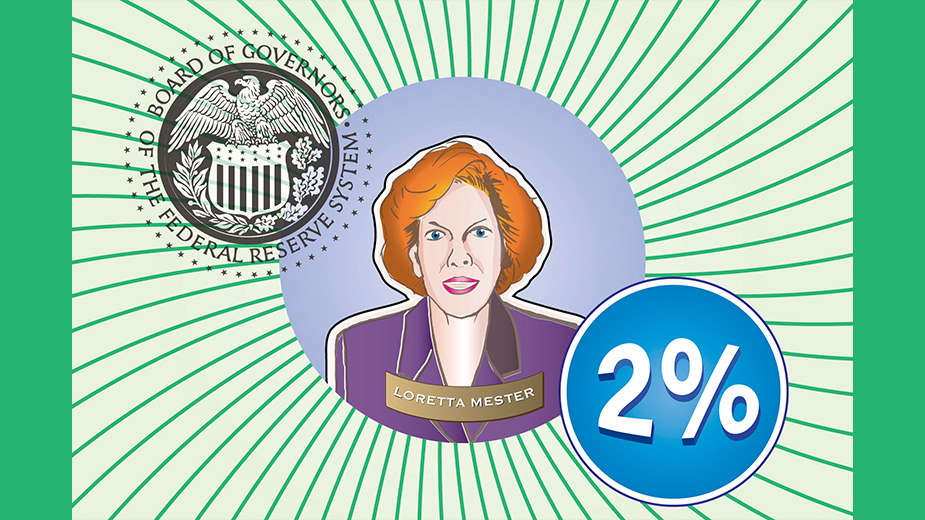Fed Official Gives Mercer Business Owners a Glimpse into 2024
SHARON, Pa. – Despite inflation remaining persistent, the U.S. economy continues to demonstrate resilience with growth in both GDP and consumer spending. But population decline is affecting growth and pandemic recovery in Mercer County and the Mahoning Valley.
Russell Mills, vice president and senior regional officer of the Pittsburgh Branch of the Federal Reserve Bank of Cleveland, spoke Thursday morning at the Shenango Valley Chamber of Commerce’s 2024 Economic Forecast Breakfast at the Corinthian Banquet Hall and Event Center.
“Population decline really affects labor force participation. It affects job growth. So if your region just doesn’t have a population base, those things are hard to sustain,” Mills said while talking about one of the biggest hurdles the area is facing.
However, Mills noted population decline is not just a concern in Mercer County or the Mahoning Valley region. It is a problem throughout much of the Midwest.
Between 2012 and 2022, Mercer County lost about 6,400 residents. The loss of people in the labor market has led to a tighter market than the rest of the country. The national unemployment rate is 3.7%, while the rate is 3.5% in Mercer County, Mills said.
While the labor force has grown 1.7% across the U.S., Mercer County’s labor force shrank by 5.7%.
“I hear people say young people don’t want to work. … Labor force participation rates for those 25 to 54 are actually 0.3 of a point higher than they were prior to the pandemic. Where we see the decline is those older than 55,” Mills said.
Mills said more people are retiring early, a figure that jumped during the pandemic and remains higher than prepandemic levels. He said there has been a reduction in the number of people quitting their job. When it comes to layoffs, the number remains low nationally, and Mills said many employers are engaging in labor hoarding, hanging onto employees even if things are slow because hiring became so difficult.
Wage growth was roughly 7% in 2021 but has declined to about 5.2%. However, Mills points out if someone believes inflation is going to be 4%, they will probably ask for 5% for their next pay raise.
Household employment is affected by population loss and labor force. Mercer County is down 4.3%, while Pennsylvania is at .8% and the U.S. is at 1.6%.
Additionally, the region’s employment recovery from the pandemic continues to lag behind other regions – the Youngstown area is down 3.6%, while there is growth in areas such as Columbus (2%), Cincinnati (3.6%) and Lexington, Kentucky. (5.8%).
Mercer County employment growth lags behind Pennsylvania and the rest of the nation, Mills said. While the county as a whole was at 2.4%, Pennsylvania is at 1.9% and Mercer County was at 1%.
The biggest sectors of growth for Mercer County were in leisure and hospitality jobs, which has grown by 5.4%, compared with only 5.1% for all of Pennsylvania, according to Mills. Additionally, construction in Mercer County is at 3.2%, which is higher than 0.3% for the state of Pennsylvania and 2.8% nationally. Government jobs in Mercer County were down 2.5%, and professional business jobs were down 1.2%
Education and health care are flat in Mercer, while they are up 5% nationally. He said in an area where the population is aging, one might expect job increases in health care, but that is not happening here.
Nationally, manufacturing is flat. But in the region, where 19.3% are employed in manufacturing, the industry grew by 1.2%.
Mills said Fed research shows manufactures remain optimistic for potential growth over the next year. Increases in the levels of orders since the pandemic are helping with that confidence.
“There are some manufacturers who are doing exceptionally well, and there are some manufacturers that are not doing well,” Mills said. “A lot of it depends on the goods and services in the production that they are in.”
For instance, he said electric vehicles and microchips are areas that are doing exceptionally well.
Both the CHIPs Act and the Inflation Reduction Act have major incentives to expand manufacturing, with government spending used on facilities, which has led to 58.1% growth in manufacturing construction spending since November 2022.
And consumer spending remains exceptionally strong despite persistent inflation. Mills said he believes this in part is related to savings people built up during the pandemic. Additionally, Mills said because many had extra money and were able to pay down debt, credit scores rose and people qualified for credit cards they are now using, which is helping to keep consumer spending high.
Despite predictions of a recession last year, the U.S. economy remained resilient in 2023, with an overall 3.1% Gross Domestic Product for 2023, and a 3.3% GDP in the fourth quarter, driven by strong consumer spending. Predictions for the first quarter of 2024 sit anywhere between 1% and 3%, Mills said.
“Consumer confidence has increased fairly significantly over the past several months,” Mills said, but he added that consumer confidence still remains well below where it was prior to the pandemic.
Mills said the savings rate continues to plummet, possibly because households already built up their savings during the pandemic or because they now have higher debt payments for their mortgage or higher rate credit cards.
While inflation has moderated some, it remains persistent and has led to the Federal Open Market Committee’s decisions to adopt a monetary policy that raised interest rates to between 5.25 and 5.5%, increasing it 11 times in 16 months. And while there is talk of inflation starting to moderate, Mills said it is important to remember that a drop in inflation does not translate into a drop in prices.
“When inflation is coming down, that does not mean that prices are coming down. That means the rate of growth of price increases is coming down,” Mills said. “Reduction in inflation does not mean reductions in prices. Prices are still going up, but they are just going up at a slower rate than they were before.”
According to the Fed’s Senior Loan Officer Opinion Survey and Haver Analytics calculations, bankers see demand for commercial and industrial lending remaining low, as well as demand for commercial real estate loans. Banks have adopted tighter standards for both.
“The commercial real estate market remains difficult for offices, but retail in particular is doing well across the U.S.,” Mills said.
Home sales remain at very low levels, while prices remain elevated in the area.
Pictured at top: Russell Mills, vice president and senior regional officer of the Pittsburgh Branch of the Federal Reserve Bank of Cleveland.
Copyright 2024 The Business Journal, Youngstown, Ohio.



